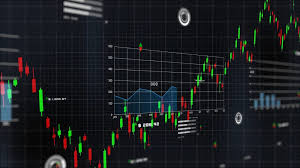
Understanding the Crypto Trading Framework
The rise of cryptocurrencies has created a new frontier in the world of finance. With diverse assets and a constantly evolving market, understanding a structured approach is essential. This is where the Crypto Trading Framework comes into play. For enthusiasts and traders alike, having a solid framework can illuminate various pathways in the dense forest of crypto trading. It ensures better strategy formulation and risk management when navigating these turbulent waters. You may also explore the thrilling world of decentralized platforms and blockchain technologies, which add significant depth and potential to the trading experience. Additionally, for a refreshing perspective on innovative transportation solutions, check out Crypto Trading Framework https://so.city/delhi/article/biking-around-dodging-gurgaon-s-traffic-have-you-heard-of-bikxie.
What is a Crypto Trading Framework?
A Crypto Trading Framework is a structured method that traders use to analyze market conditions, develop trading strategies, and manage risk. This framework integrates technical analysis, market indicators, psychological factors, and regulatory awareness, providing a holistic approach to trading in the cryptocurrency market.
Core Components of the Framework
1. Market Analysis
Market analysis serves as the backbone of any trading framework. However, in the realm of cryptocurrencies, it can be segmented into two primary types: fundamental and technical analysis.
- Fundamental Analysis: Involves evaluating a cryptocurrency’s underlying technology, team, market demand, and overall utility. Understanding the dynamics of supply and demand, as well as the potential for real-world applications, is crucial.
- Technical Analysis: Focuses on statistical trends gathered from trading activity, such as price movement and volume. This approach often uses tools like moving averages, Bollinger Bands, and chart patterns to predict future price movements.
2. Technical Tools and Indicators
Successful traders often deploy various technical indicators to fine-tune their strategies. Some popular indicators include:
- Relative Strength Index (RSI): Measures the speed and change of price movements, helping traders identify overbought or oversold conditions.
- Moving Average Convergence Divergence (MACD): A trend-following momentum indicator that shows the relationship between two moving averages of a security’s price.
- Fibonacci Retracement: A tool used to identify potential reversal levels in the price movement of cryptocurrencies.

3. Risk Management
Risk management is vital in crypto trading. The volatile nature of cryptocurrencies makes it easy to incur substantial losses without a solid management plan. Key techniques include:
- Position Sizing: Determines how much of a particular cryptocurrency to buy or sell based on your overall portfolio size and risk tolerance.
- Stop Loss Orders: Automate the process of exiting a trade to minimize losses when the market moves against you.
- Diversification: Spread your investment across various cryptocurrencies to mitigate risks associated with any single asset.
The Psychological Aspect
Trading isn’t solely reliant on data; psychological factors play a significant role. Understanding one’s own biases and emotional responses to market fluctuations is crucial. Traders must cultivate discipline, patience, and resilience. Avoiding impulsive decisions and sticking to a pre-established plan can often be the difference between success and failure.
Creating Your Personal Trading Strategy
To effectively utilize a Crypto Trading Framework, traders should create a personalized strategy that reflects their unique goals, risk tolerance, and market understanding. This involves:
- Defining Goals: Outline clear objectives for trading, whether it’s short-term gains, long-term investments, or a mix of strategies.
- Testing Strategies: Use backtesting to refine your trading strategies against historical data before applying them to live trades.
- Staying Informed: Keep abreast of market news, regulatory changes, and technological advancements that may impact trading strategies.
The Importance of Adapting to Market Changes
The cryptocurrency market is particularly susceptible to rapid changes. Therefore, continuous learning and adaptation are critical components of an effective Crypto Trading Framework. Traders must be willing to revise their strategies and techniques in response to shifting market conditions.
Conclusion
In conclusion, the Crypto Trading Framework holds the potential to significantly improve trading outcomes in the complex world of cryptocurrencies. By integrating market analysis, technical tools, risk management, psychological discipline, and a personalized approach, traders can optimize their strategies and navigate the inherent risks of this volatile landscape. As the market evolves, so too must the strategies; hence continuous education and adaptation will remain vital for successful trading endeavors.
